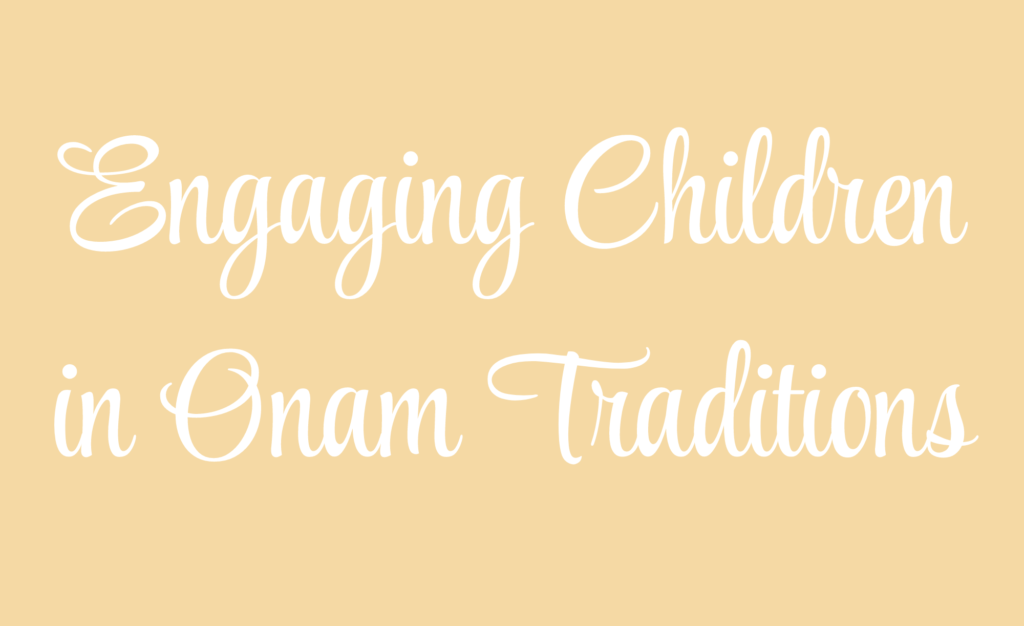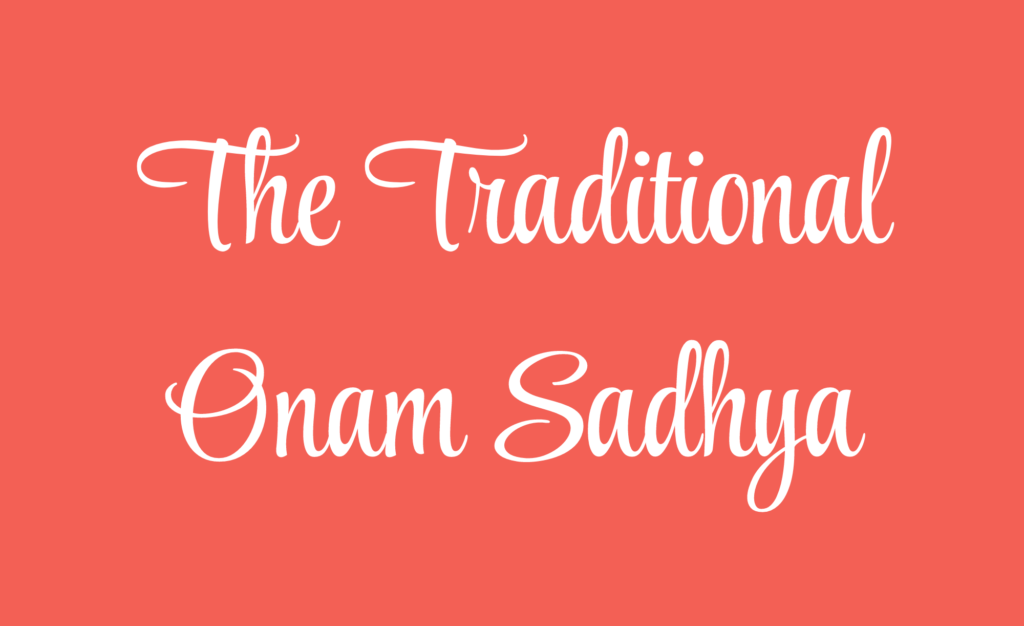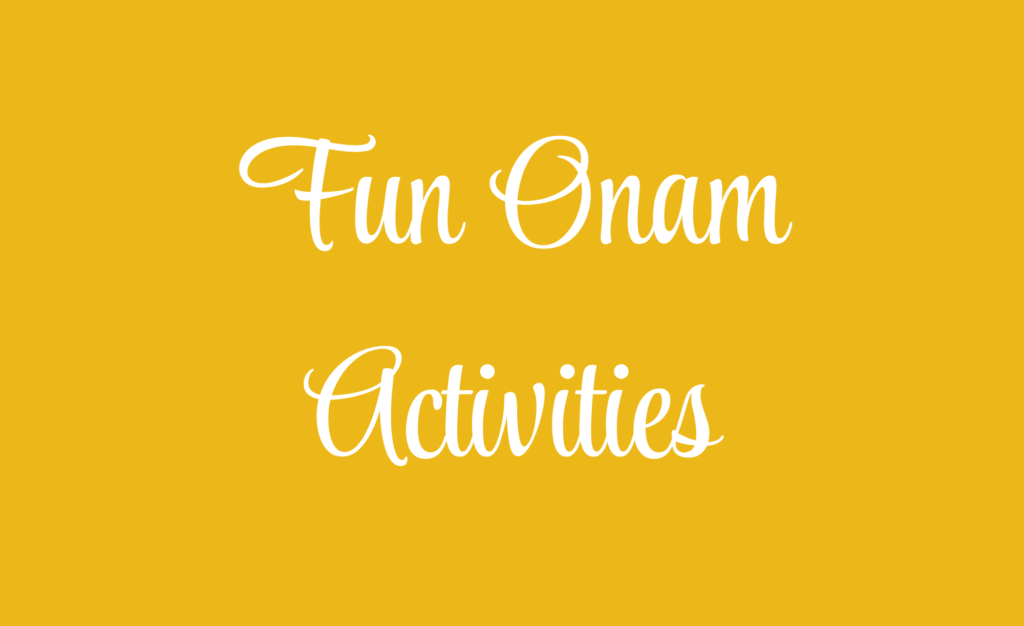Environmental and Social Consciousness
Onam, as a festival that celebrates the bounty of the harvest and the prosperity of the land, offers a perfect opportunity to instill values of environmental stewardship and social responsibility in children. In today’s world, where sustainability and community care are more important than ever, incorporating these values into Onam celebrations can create a meaningful impact. Here’s how you can integrate these concepts into your family’s Onam festivities.
Eco-Friendly Celebrations
Onam is traditionally a celebration of nature’s abundance, making it an ideal occasion to teach children about the importance of environmental care and sustainability. By making small, conscious choices, families can reduce their environmental footprint while celebrating the festival.
Natural Pookalams
Sustainable Sadhya
Eco-Friendly Crafts
Materials: Instead of using synthetic colors or artificial flowers, encourage children to create Pookalams using eco-friendly materials. For example, you can use fresh flowers, leaves, seeds, and even vegetable scraps to create vibrant patterns. Natural dyes made from turmeric, beetroot, spinach, or coffee can be used to color rice or sawdust, which can then be arranged in beautiful designs.
Learning Opportunity: While gathering materials for the Pookalam, engage children in discussions about where these materials come from and why using natural products is better for the environment. Explain the concept of biodegradability and how natural materials break down without harming the earth.
Upcycling Projects: Encourage children to think creatively by using upcycled materials for decorations. For example, old newspapers can be transformed into paper flowers, and used bottles can be painted and turned into decorative vases. This not only reduces waste but also teaches the value of reusing materials.
Local and Organic Ingredients: While preparing the Onam Sadhya, consider sourcing ingredients locally and choosing organic products whenever possible. Involve children in a trip to a local farmers’ market, explaining the benefits of supporting local farmers and the reduced environmental impact of locally grown food.
Waste Reduction: Teach children about minimizing food waste by preparing only as much food as needed and finding creative ways to use leftovers. For example, leftover Sadhya ingredients can be repurposed into new dishes the next day, turning sustainability into a fun and delicious challenge.
Natural Decorations: When making decorations for the home, choose materials that are either biodegradable or recyclable. For example, use jute, cotton, or other natural fibers to make banners and garlands. Children can help by cutting, painting, and assembling these decorations, learning about sustainable materials in the process.
Recycling Workshops: Organize a family craft workshop where children learn to make traditional Onam crafts using recycled materials. For example, they can create Pulikali masks using cardboard from old boxes, or design their own Vallam Kali boats from recycled plastic bottles. This hands-on experience reinforces the importance of reducing waste.
Charity and Community Service
Onam is a time of abundance and sharing, making it an ideal occasion to teach children about the importance of giving back to the community and helping those in need. By integrating acts of charity and community service into your celebrations, you can instill values of compassion and social responsibility.
Donating to Food Banks
Community Service Projects
Helping the Elderly or Needy
Sadhya Sharing: Encourage children to set aside a portion of the Sadhya, either in the form of food or monetary donations, to be given to a local food bank or charity. Explain how their contribution can help those who are less fortunate enjoy a festive meal, reinforcing the idea that Onam is about sharing joy with others.
Charity Cooking: Consider organizing a charity cooking event where families prepare extra portions of the Sadhya to be distributed to those in need. Involve children in the cooking and packaging process, making it a collaborative effort to help the community.
Park Cleanup: Organize a community service project, such as cleaning up a local park or beach. This can be framed as a way to honor the spirit of Onam by taking care of the environment that provides for us. Children can participate by picking up litter, planting flowers, or even painting signs that encourage others to keep the area clean.
Tree Planting: Another meaningful activity is planting trees or starting a small community garden. Children can be involved in choosing the plants, digging the holes, and caring for the trees as they grow. This activity not only beautifies the community but also contributes to environmental conservation.
Community Outreach: Encourage children to reach out to elderly neighbors or those who may be alone during the festival. This could involve delivering a small portion of the Sadhya, offering to help with chores, or simply spending time with them. This teaches empathy and the importance of caring for others.
Fundraising for a Cause: Organize a small fundraising event, such as a bake sale or craft fair, where children can sell their homemade goods. The proceeds can be donated to a charity that supports education, health, or environmental conservation in Kerala, connecting the festival to a greater cause.
Educational Campaigns
Onam also presents an opportunity to educate children and the broader community about Kerala’s environmental and cultural heritage. By engaging in educational campaigns, children can take an active role in preserving and promoting their cultural identity while advocating for important causes.
Creating Awareness
Social Media Advocacy
Cultural Preservation
Poster and Art Competitions: Organize a poster or art competition with themes related to Kerala’s environmental challenges, such as the conservation of the Western Ghats, the importance of protecting endangered species, or the significance of traditional farming practices. Children can create informative and visually appealing posters that can be displayed in the community or shared on social media.
Digital Storytelling: Encourage children to create short videos or digital stories about Kerala’s cultural and environmental heritage. These could include topics like the importance of preserving traditional art forms, the impact of deforestation on wildlife, or the role of sustainable farming in maintaining Kerala’s biodiversity. These stories can be shared online to raise awareness and educate others.
Social Media Campaigns: Teach children how to use social media platforms to advocate for causes they care about. For example, they can create posts, infographics, or videos that highlight the importance of conserving Kerala’s natural resources, or they can share stories about how their family is celebrating an eco-friendly Onam. Use hashtags like #GreenOnam or #EcoFriendlyOnam to connect with a larger audience.
Collaborative Projects: Partner with schools or community organizations to create collaborative projects that involve children in researching and presenting information about Kerala’s environmental and cultural heritage. This could culminate in a virtual exhibition or a community event where the children present their findings.
Heritage Projects: Involve children in projects that focus on preserving and promoting Kerala’s traditional art forms, music, and crafts. For example, they could interview local artists or elders about traditional practices, document these practices through videos or written stories, and share them with their peers. This not only helps preserve cultural knowledge but also instills a sense of pride and responsibility in the younger generation.
Environmental Education: Use Onam as a platform to educate children about the ecological significance of Kerala’s landscapes, such as the backwaters, forests, and mountains. Plan a family nature walk or a virtual tour of Kerala’s natural wonders, discussing the importance of protecting these areas for future generations.
Incorporating environmental and social consciousness into Onam celebrations not only enriches the festival experience but also teaches children valuable lessons about sustainability, community service, and cultural preservation. By making eco-friendly choices, engaging in charitable activities, and participating in educational campaigns, families can ensure that Onam is celebrated in a way that honors both the earth and the community. These practices help children understand that Onam is not just about personal joy and prosperity but also about sharing and caring for the world around us. Through these actions, the spirit of Onam can be extended beyond the festival itself, fostering a lifelong commitment to environmental stewardship and social responsibility.






